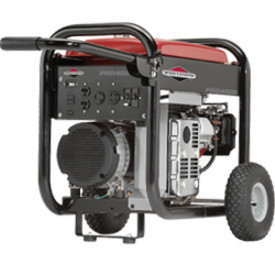Somewhere the power is going to go out tonight—storm, accident, bills, whatever. According to the Electric Power Research Institute 3.5 million people lose power in the U.S. each week. I found this list of 10 portable generator safety tips on my desk. They are from Briggs & Stratton, but apply to any generator, anywhere, any time. It would be foolish not to share them with the unlucky 3.5 million folks who don’t have power. Please read this before the lights go out and fire up your generator—it might save your life.
1. Always read and follow the manufacturer’s operating instruction before running generator.
2. Engines emit carbon monoxide. DO NOT run generator in enclosed area.
3. Use your generator outdoors only, away from open windows, vents, or doors. Never use your generator inside homes, garages, crawl spaces, or other enclosed areas. Fumes that can kill you can build up in these areas. Using a fan and opening doors or windows does NOT provide enough fresh air.
4. Use a battery-powered carbon monoxide detector when running your generator.
5. Gasoline and its vapors are extremely flammable, allow engine to cool at least two minutes before refueling. Always use fresh gas in your generator. If you do not plan to use your generator in 30 days, stabilize the gas with fuel stabilizer.
6. Maintain your generator according to the maintenance schedule for peak performance and safety.
7. DO NOT operate the generator near combustible materials.
8. When using extension cords, be sure they are of the grounded type and are rated for the application. Coiled cords can get HOT, always uncoil cords and lay them in flat open locations.
9. If you are connecting a generator into your home electrical system, have a qualified electrician install a Power Transfer Switch. Never plug your generator into your home outlet.
10. Protect your generator from exposure to rain or snow. Generators produce powerful voltage; DO NOT operate under wet conditions.




























